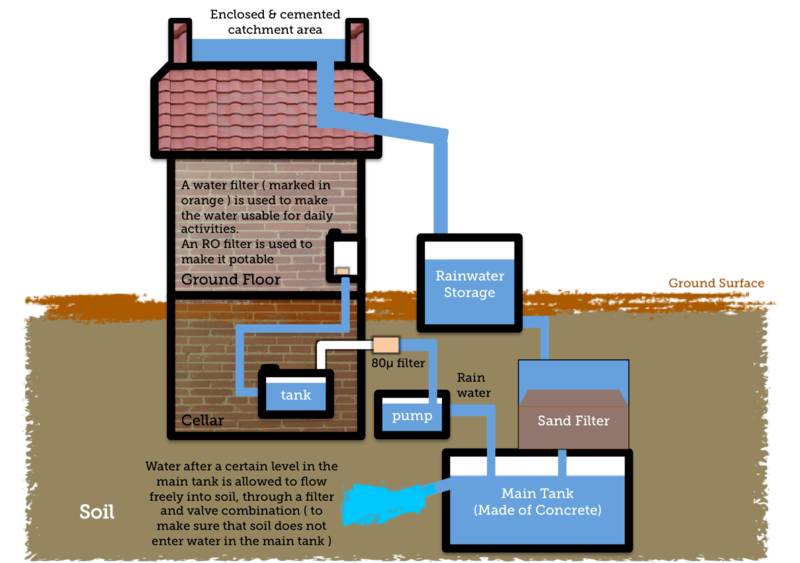The recent drought has cast its evil spell on various parts of the country. The soaring temperatures and a deficit rainfall for over a year had serious implications on the water levels and agriculture. In states like Maharashtra the water scarcity was at an alarming level that water had to be transported through trains.
Why are we facing such a situation? Are we really responsible for this? Absolutely yes! We encroached upon our lakes, destroyed our forests, polluted our rivers in the disguise of progress.
Progress is good but it shouldn’t destroy the very basic necessity of life and this is nothing but greed. El Niño had serious effect on the rainfall for a year, many states had received a deficit rainfall and we were not ready for this.
What is the way forward now? The answer is water conservation. Water conservation is necessary because every drop of water Is precious, according to the statistics the World Bank estimates that by the year 2025, 3.25 billion people in 52 countries will live in conditions of water shortage. A small step will make a great difference. There are many ways for water conservation and most importantly this should be a continuous activity involving every citizen, in short, it should be a revolution. One such revolution is brought in Andhra Pradesh thanks to “Inkudu Guntalu” programme. The aim of this programme is to encourage people to dig water harvesting pits at their homes with public representatives leading the campaign. Eenadu, the Telugu language Media Group has given a much needed boost to this programme by turning it into a campaign.
How does a Rain Water Harvest pit work?? Just dig an 8-foot hole into the ground and 4 feet width near the pump motor and add pieces of bricks and sand layer by layer until the hole is covered. Now just connect a pipe between the water sump and the pit. When it rains, all the water is absorbed by this pit thus recharging the ground water. This is a simple technique of tapping rain water and making it into use [There are other techniques in the links below]. The major benefit is it is cost efficient, there won’t be any need of spending a huge amount of money on digging bore wells. About 90% of ground water is used for drinking purposes, this Rain water harvest (RWH )pit will help in addressing the drinking water scarcity, particularly in summer.
The RWH pit used in farms is called a farm pond. This is a larger pit where the rain water can be used for irrigation or aquaculture. This saves the farmer the cost of digging bore wells and in arid areas precious rain water can be used for irrigation without wasting even a single drop. This will also help the farmer in earning an extra income through raising fish in these ponds.
The response to the inkudu guntalu programme is tremendous in all the 13 districts of Andhra Pradesh. The Government of Andhra Pradesh has aimed at digging 8 lakh pits and 6 lakh farm ponds this year. But the count for rwh pits has crossed 10 lakhs already. The government has set a new target of 8 lakh farm ponds in the coming year. Prime minister Narendra Modi has even lauded the AP government’s effort in his maan ki baat address.
Why should rain water harvesting be limited to rural areas?? Roof top pits will be a great option particularly in apartments. This helps in addressing the constant water scarcity in cities. The civic administration must pass a rule that every new construction must include a provision for Rain Water Harvesting pit.
What started as a small drop has now become an ocean. The active participation of people has taken a long way beyond success. In coming days I am sure we will see drought free areas in Andhra Pradesh and stand an inspiration to this country.
[Here are some useful Links on RWH Methods and FAQ: One, Two, Three, Four, Five]
The author of this post, Anil Prongs, can be reached on Twitter. This article was originally published on the author’s personal blog on May 28, 2016.
Disclaimer: This article represents the opinions of the Author, and should not be considered a reflection of the views of the Andhra Cultural Portal. The Author is responsible for ensuring the factual veracity of the content, herein.


![[Reprint Post] An Outline on Dharmanomics](http://andhraportal.org/wp-content/uploads/2014/05/mahabharat2-150x150.jpg)




Good
hi, we do rain water harvesting in hyderabad. Please visit our website.
http://www.rainindia.org